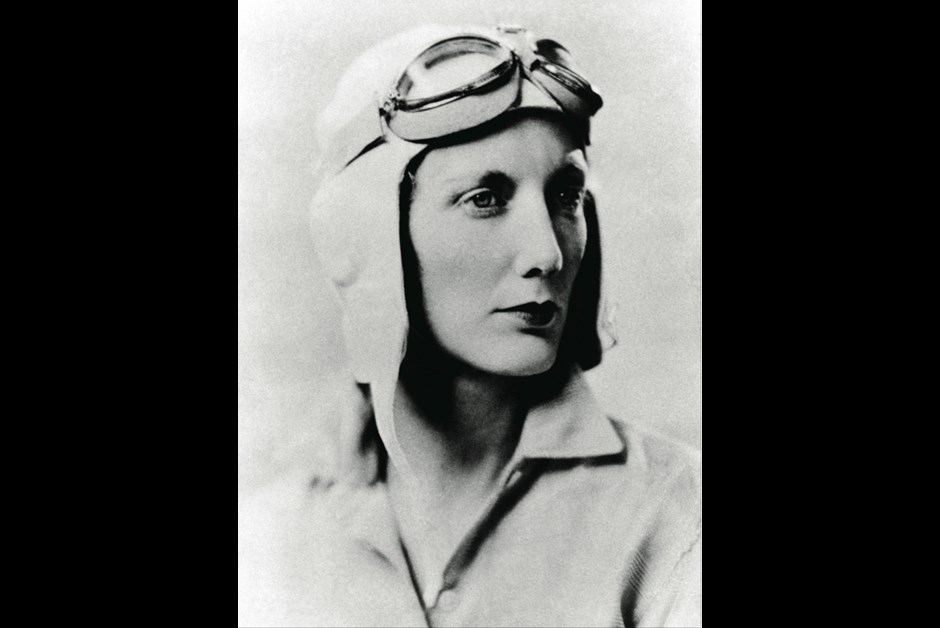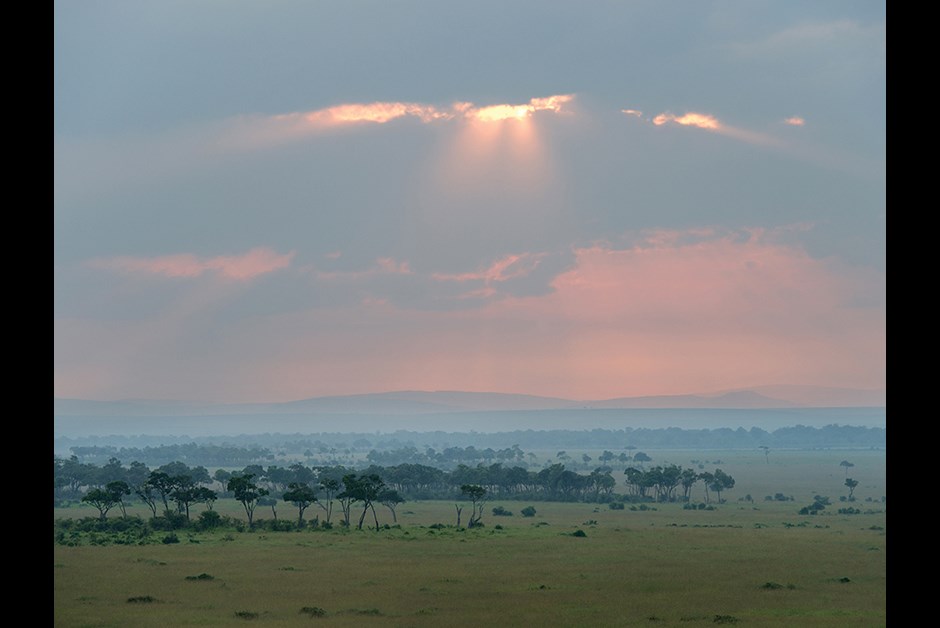A Life Untamed
By Paula McLain
Beryl Markham came to Kenya as a toddler. Drawn to a new life on an African farm, her pioneering parents, Charles and Clara Clutterbuck, traded the tame English countryside for bush country in Njoro, 100 miles north of Nairobi, and struggled to break the land. Undoubtedly, growing up surrounded by wildness shaped the wildness in the future aviator and author’s own character. Freshness, audacity and grit leap from the pages of West with the Night, her memoir first published in 1942, which reads like a love letter to Africa, but also to courage itself, and originality: the commitment to living on one’s own terms, no matter the cost.
The book and the woman instantly got under my skin, and obsession took over. Within hours of cracking West with the Night, I knew I would write a novel about Markham’s life. I also knew I would someday travel to Kenya to better understand her by standing on her own turf. But first, there was a lot of work to do, and also pining. Out of my study window, Cleveland’s punishing winter turned to slushy, stingy spring, while my desk remained buried under drifts of source materials – some of them biographies and compilations of letters from Karen Blixen and Denys Finch Hatton, historical figures I had been half in love with since watching Sydney Pollack’s swoon-worthy film adaptation of Out of Africa, the memoir written by Blixen under the pen name Isak Dinesen. By this point in my research, I’d learned something I couldn’t have even guessed from reading West with the Night: that when she was a young woman, Markham was entangled for nearly 10 years in a complex love triangle with Blixen and Finch Hatton, the safari hunter immortalized in the memoir and film.
Blixen is never mentioned in Markham’s book, nor does Beryl turn up even briefly in Out of Africa. The gaps and silences between these rivals, far more tantalizing than confession, began to clamor with an invitation to tell a story that hadn’t been told. Now I was fixated on all three historical figures, mesmerized by the smoking gun of their intimacy, and so keen on getting to Kenya I might have flown there on my own two wings.
Nairobi. The word alone is as exotic and rich with potential as a genie in a bottle. When I landed after 25 hours of travel, adrenaline swirled in to replace every whiff of travel fatigue. The night air was warm as an animal and unfamiliar stars glinted from above. After I’d navigated Jomo Kenyatta International Airport, it seemed an act of simple magic to find a rumbling Land Cruiser waiting to speed me through the sultry night toward Fairmont The Norfolk. Simple magic and also the deepest sort of wish fulfillment that this landmark hotel, so synonymous with Kenya’s early history and a place I’d imagined more times than I could count, would be my home base in Nairobi.
It’s dangerous to fall in love with history. Current-day Nairobi is sprawling and modern with a population verging on 3.5 million. There are very few vestiges of the sepia-toned frontier town Markham and Blixen knew – but The Norfolk is one. Once inside its doors, I felt marvelously plunged back into colonial days. Graceful columns and balustrades defined the lobby and plush sitting room, and the storied lobby bar. But it was the courtyard that drew me most, the stately palms and jacaranda trees, the shrubs in flower along the manicured path.
Beyond the sheltering gates, Nairobi pulsed and thrummed, but here the past felt near enough to touch. It took no effort to imagine Beryl Markham on her wedding night, in 1919, when she was not quite 17 years old. Her first husband (she was married three times) was Jock Purves, a local farmer twice her age who is rumored to have purchased Markham’s hand from her father when the Clutterbucks’ farm went bankrupt after the First World War. In photos Markham is as tall and slender as a warrior’s hunting spear, fair and regal in her ivory silk dress, but there’s
a hint of lostness in her eyes, as if she can’t quite believe she’s someone’s wife.
Marriage didn’t suit her. She was too young, for a start, but also too free a spirit, and Purves couldn’t begin to tame her. She was impulsive, had affairs and made no apologies or attempts to hide her behavior. The colony was scandalized, but Purves was at fault too. When drunk, which apparently he often was, Purves stirred up fights with his young wife that set tongues wagging. She finally got the nerve to leave him, and turned to training racehorses to get by. Women didn’t do any such thing then, but Markham had no other choice. Thank goodness she also happened to be brilliant at it.
It was during this period of her life that she first became friendly with Karen Blixen, who lived on a coffee farm just outside of Nairobi at the foot of the Ngong Hills, a farm that shimmers with immortality in the author’s writings. Like Markham, Blixen was too original and independent for many in the colony. After her marriage to her Swedish cousin, Bror, fell apart, Blixen ran her farm on her own, risking her health and financial ruin to do so. “Here I am,” she wrote passionately in Out of Africa, “where I ought to be.”
The house, now the Karen Blixen Museum, has been so lovingly and perfectly preserved it virtually quivers, alive with its own history. Beyond the gracefully curving gravel drive and broad, groomed lawn, a cool veranda rings a gray stone bungalow with a pitched tile roof. The whole place seems wonderfully haunted by Blixen’s spirit. Inside, nearly everything is as it was then: the silky mahogany walls in the dining room, where she penned the sketches that comprised the raw material for Out of Africa, Shadows on the Grass and Seven Gothic Tales, her low white bed, and the dressing table where her silver-handled brushes still rest as if waiting for her return. And there’s the pitted bluestone hearth in her parlor, where she piled up pillows to make a nest for storytelling, decanting brandy for her friends and her famous lover.
Standing six feet and three inches in his custom-made shoes, and with far less hair than Robert Redford, who played him in the film (with an American accent, no less), Denys Finch Hatton was the son of a British peer. His father was the thirteenth Earl of Winchilsea, and the eighth Earl of Nottingham. But his father’s Britain was far too small and safe a world for Finch Hatton. After Eton and Oxford, he lit out for the territories, landing first in South Africa and finally settling in the Great Rift Valley. He met Karen Blixen at a dinner party at the famous Muthaiga Country Club in Nairobi, and though she was still married, she fell instantly for his intoxicating mix of man’s man, troubadour and eternal wanderer. He loved poetry and Caruso, strong, iconoclastic women, and wildness, both external and internal. He was also willing to risk absolutely everything to live life on his own terms.
Blixen and Finch Hatton were both older than Markham by more than 15 years, and far more cultured and worldly. Markham found herself drawn to their warm, civilized circle, liking that they had things to teach her about poetry, wine, classical music. But it was the wild creature still very much at her center who wanted Finch Hatton.
She got him, too. Though Out of Africa is too perfectly romantic a mythology to so much as whisper it, Finch Hatton had left Blixen for Markham well before his tragic death, in 1931, when his de Havilland Gipsy Moth spun to the ground and burst into flame. (Markham lived until 1986, her ashes scattered over a Nairobi racetrack.)
Finch Hatton’s grave rests atop one of the knuckle-shaped Ngong Hills, which I reached with some effort in the Land Cruiser, climbing a rutted, swaybacked road through towering eucalyptus. When Finch Hatton died, Blixen set four posts at the gravesite to hold a white cloth she would be able to see from her veranda and know, always, exactly where he was. In the 1940s, the posts were replaced by a stone obelisk that now stands nearly hidden behind a garden fence overhung with flowering thistle. I walked through the gate into a small, tended garden to reach the stone marked with a small plaque – “Denys George Finch Hatton, 1887–1931” – and then these lines from Samuel Coleridge’s “The Rime of the Ancient Mariner”: “He prayeth well, who loveth well, both man and bird and beast.”
It’s particularly cruel that Blixen lost her farm to bankruptcy in the same year that she lost her lover. She left Africa for Denmark, where five years passed before she was able to write through her grief to produce Out of Africa, one of the most unforgettable love stories of all time. And if it’s not an altogether true story, I couldn’t find it in me to fault Blixen or any of these three as I touched the stone edifice one last time and returned to the Land Cruiser and the bumpy, haunted ride back to town. The human heart is mysterious and complex and untameable, a “forest without roads,” as Markham said of Kenya – an “unconquered mountain.” And better for it, I believe.
Back at Fairmont The Norfolk, opened in 1904, I found a deep rattan chair on a veranda overlooking the quiet courtyard and scribbled furiously in my notebook, not wanting to forget a single moment. But of course that wasn’t possible. In just my first 24 hours, Nairobi had given me such a powerful sense of connection to the past it had already taken up residence deep in the recesses of my own complex heart. I would take everything I’d seen and felt back to Cleveland, back to my desk and my book… but not just yet. For the moment, I was still held tight by the past, still in Nairobi, where an all-but-forgotten time rests close enough to step into, near enough to touch.
Concierge
STAY
With its stately Lord Delamere Terrace and lush tropical gardens, Fairmont The Norfolk earned the nickname of “the hotel that built Nairobi” for having fostered the city’s growth since opening in 1904. Today, The Norfolk remains a popular meeting place for locals and a home base for safari-going visitors. fairmont.com/norfolk-hotel-nairobi
DINE
Reserve a table at the hotel’s award-winning Tatu for American-Kenyan cuisine (try Sukuma Wiki, a traditional dish of braised greens, or a succulent steak sourced from a local farm). Don’t miss Sunday brunch at Lord Delamere Terrace, which features a sprawling buffet, raw bar and carving station.
DO
Shoppers can test their bargaining skills at the City Market, where vendors sell one-of-a-kind souvenirs, accessories and household items. Back at the hotel, lounge by the heated outdoor pool, a peaceful oasis tucked away from the city crowds, or indulge in a massage at the Health & Fitness Centre.
Ask the concierge about arranging a visit to nearby attractions such as Lake Nakuru National Park, known for its Pink Lesser Flamingos, or the Karen Blixen Museum, housed in the famed author’s former estate and showcasing many of her belongings.

